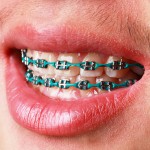
Pain is a not uncommon side effect of orthodontic treatment with up to 95% of orthodontic patients reported to have suffered some pain or discomfort while undergoing orthodontic procedures. Pain is considered to be commonest during placement of separators, activation of arch- wires, mini-screw insertion, and debonding fixed appliances and a number of different approaches to reduce pain or discomfort have been investigated.
The aim of this review was to assess the effectiveness of different methods/adjuncts in reducing pain/discomfort perception during debonding procedure (PDP) of fixed orthodontic appliances.
Methods
Searches were conducted in the Cochrane Library, Medline, Embase, Lilacs, Scopus and Web of Science databases. Randomised clinical trials (RCTs) and controlled clinical trials comparing different approaches/adjunctive procedures to reduce pain during debonding of fixed orthodontic appliances were included. Two reviewers independently screened and selected studies abstracted data and assessed risk of bias using the Cochrane risk of bias tool. Meta-analysis was planned but not conducted owing to study heterogeneity.
Results
- 7 studies involving a total of 307 patients were included.
- 2 studies were conducted in Brazil, 1 in each of the following countries, India, Turkey, Pakistan, UK and USA.
- 4 studies assessed different debonding instruments, 2 adjunctive modalities and 1 study oral analgesics.
- 6 studies were considered to be at high risk of bias and 1 at unclear risk.
- Of 4 studies comparing different debonding instruments of labial fixed appliances, two studies showed that the lift-off debonding instrument (LODI) produced lower PDP levels than ligature cutting pliers.
- 3 studies compared adjunctive measures to reduce PDP of labial fixed appliances. Finger pressure and bite wafers significantly reduced PDP levels.
- Analgesics administration (ibuprofen + paracetamol tablets) 1 hour prior to debonding also reduced PDP.
- PDP was significantly higher in anterior segments and in females.
Conclusions
The authors concluded: –
..there is weak evidence suggesting that the prescription of pre-debonding oral analgesics (such as ibuprofen and paracetamol) or the use LODI, FP or bite wafers during debonding of labial fixed orthodontic appliances may be beneficial in reducing the levels of PDP compared to conventional techniques. Regardless of the utilized debonding technique/adjunct, patients seem to experience their highest levels of PDP in the anterior rather than posterior regions, and females have higher levels of PDP than males. Further high-quality parallel-group RCTs with standardized methodologies, taking into consideration the diurnal variation in pain and level of experience of treating clinician are required.
Comments
A broad range of databases have been searched to identify studies for this review and a number of trials have been identified. However, because of heterogeneity particularly in relation to the use of pain measurement tools pooling of data was not possible. The authors also raised to two other points for consideration in future studies; diurnal variation and gender difference in pain perception.
This review suggests that prescription of analgesia may reduce pain during debonding procedures and a recent Cochrane review (Dental Elf – 6th Dec 2017) which looked more broadly at pain management during orthodontic treatment concluded that
Analgesics are more effective at reducing pain following orthodontic treatment than placebo or no treatment. Low-quality evidence did not show a difference in effectiveness between systemic NSAIDs compared with paracetamol, or topical NSAIDs compared with local anaesthetic. More high-quality research is needed to investigate these comparisons, and to evaluate pre-emptive versus post-treatment administration of analgesics.
Links
Primary Paper
Almuzian M, Rizk MZ, Ulhaq A, Alharbi F, Alomari S, Mohammed H. Effectiveness of different debonding techniques and adjunctive methods on pain and discomfort perception during debonding fixed orthodontic appliances: a systematic review. Eur J Orthod. 2019 Apr 1. pii: cjz013. doi: 10.1093/ejo/cjz013. [Epub ahead of print] PubMed PMID: 30934051.
Other references
Dental Elf – 5th Feb 2018
Dental Elf – 6th Dec 2017
